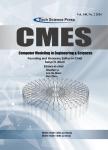Predicting Human Mobility via Long Short-Term Patterns
作者机构:College of Computer Science and TechnologyQingdao UniversityQingdao266071China
出 版 物:《Computer Modeling in Engineering & Sciences》 (工程与科学中的计算机建模(英文))
年 卷 期:2020年第124卷第9期
页 面:847-864页
核心收录:
学科分类:0711[理学-系统科学] 07[理学] 0835[工学-软件工程] 0811[工学-控制科学与工程] 0701[理学-数学] 0812[工学-计算机科学与技术(可授工学、理学学位)]
基 金:This research was supported in part by National Key Research and Development Plan Key Special Projects under Grant No.2018YFB2100303 Key Research and Development Plan Project of Shandong Province under Grant No.2016GGX101032 Program for Innovative Postdoctoral Talents in Shandong Province under Grant No.40618030001 National Natural Science Foundation of China under Grant No.61802216 Postdoctoral Science Foundation of China under Grant No.2018M642613.
主 题:Human mobility prediction CNN average pooling
摘 要:Predicting human mobility has great significance in Location based Social Network applications,while it is challenging due to the impact of historical mobility patterns and current trajectories.Among these challenges,historical patterns tend to be crucial in the prediction task.However,it is difficult to capture complex patterns from long historical trajectories.Motivated by recent success of Convolutional Neural Network(CNN)-based methods,we propose a Union ConvGRU(UCG)Net,which can capture long short-term patterns of historical trajectories and sequential impact of current trajectories.Specifically,we first incorporate historical trajectories into hidden states by a shared-weight layer,and then utilize a 1D CNN to capture short-term pattern of hidden states.Next,an average pooling method is involved to generate separated hidden states of historical trajectories,on which we use a Fully Connected(FC)layer to capture longterm pattern subsequently.Finally,we use a Recurrent Neural Net-work(RNN)to predict future trajectories by integrating current trajectories and long short-term patterns.Experiments demonstrate that UCG Net performs best in comparison with neural network-based methods.



